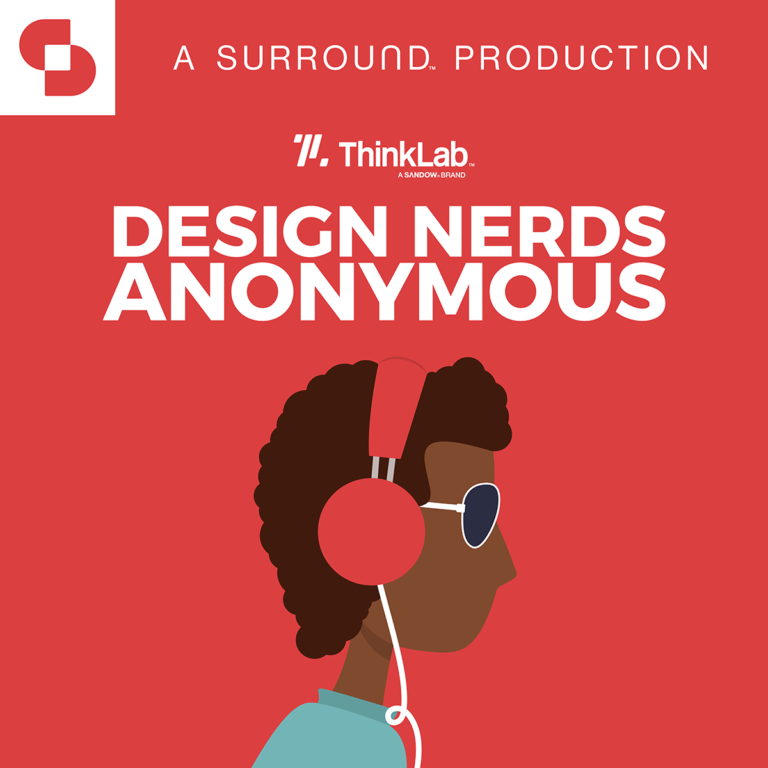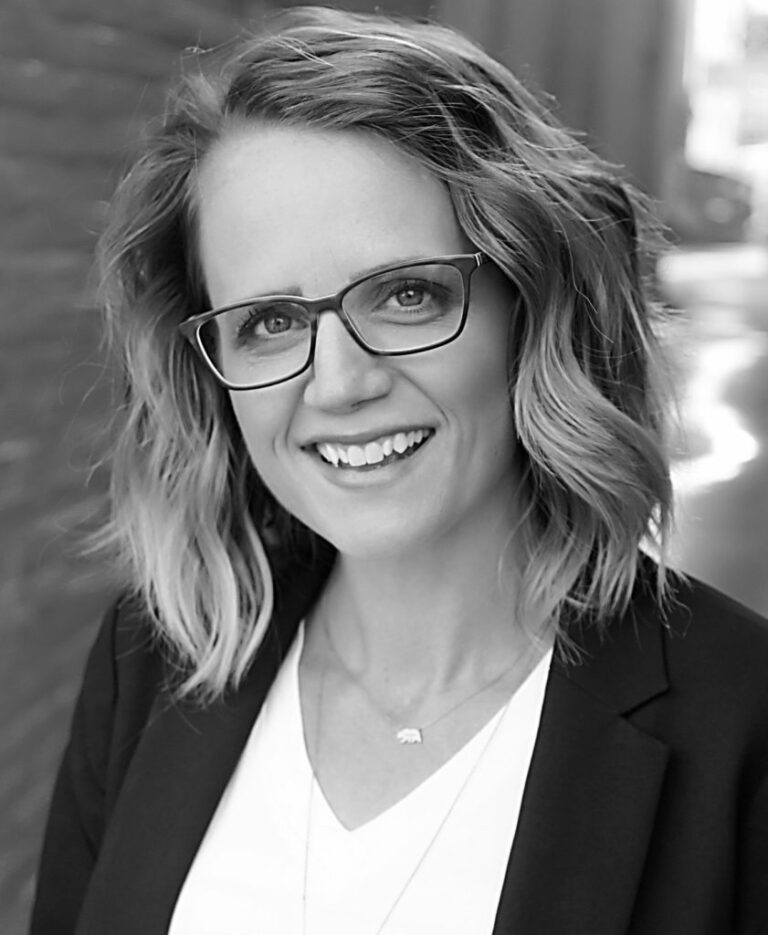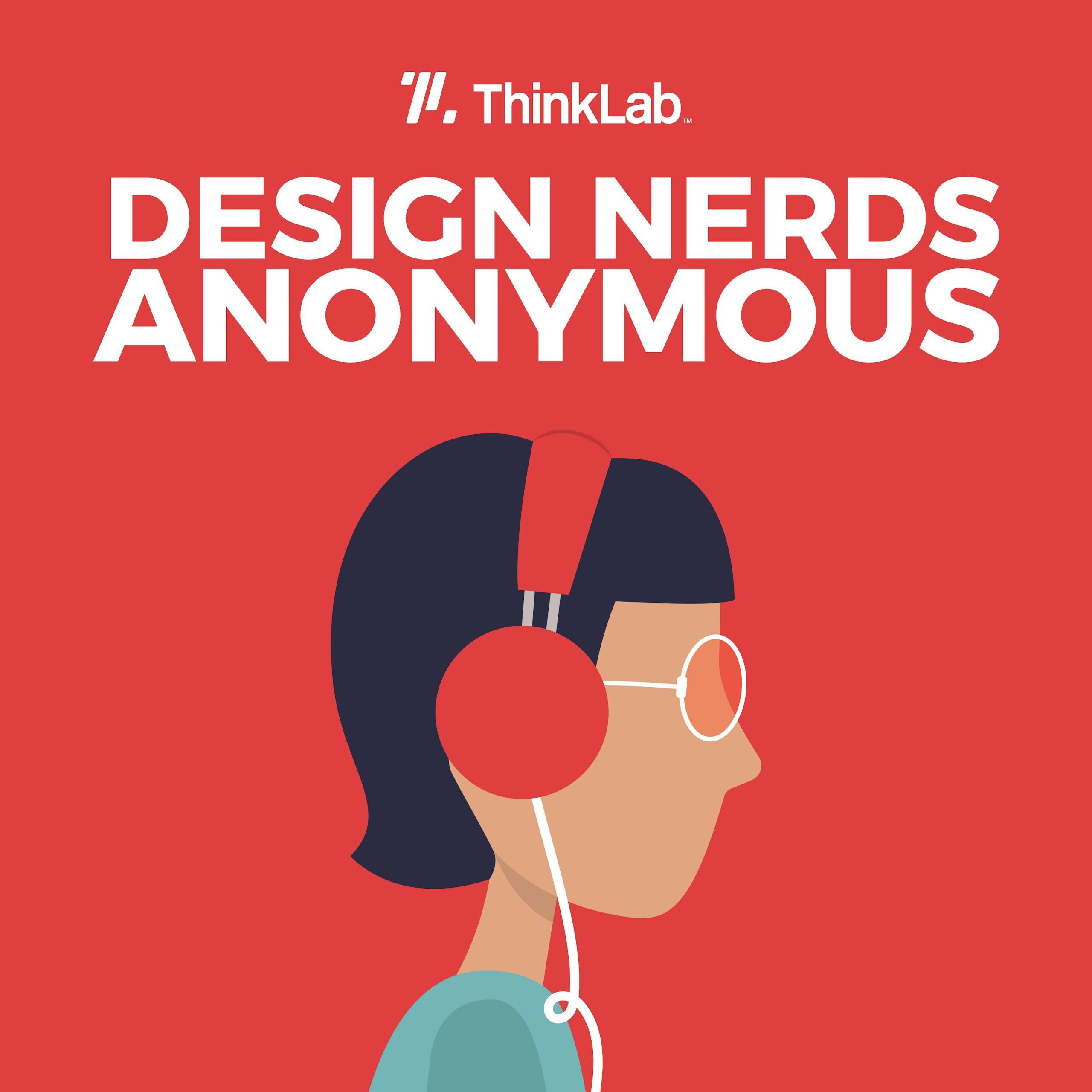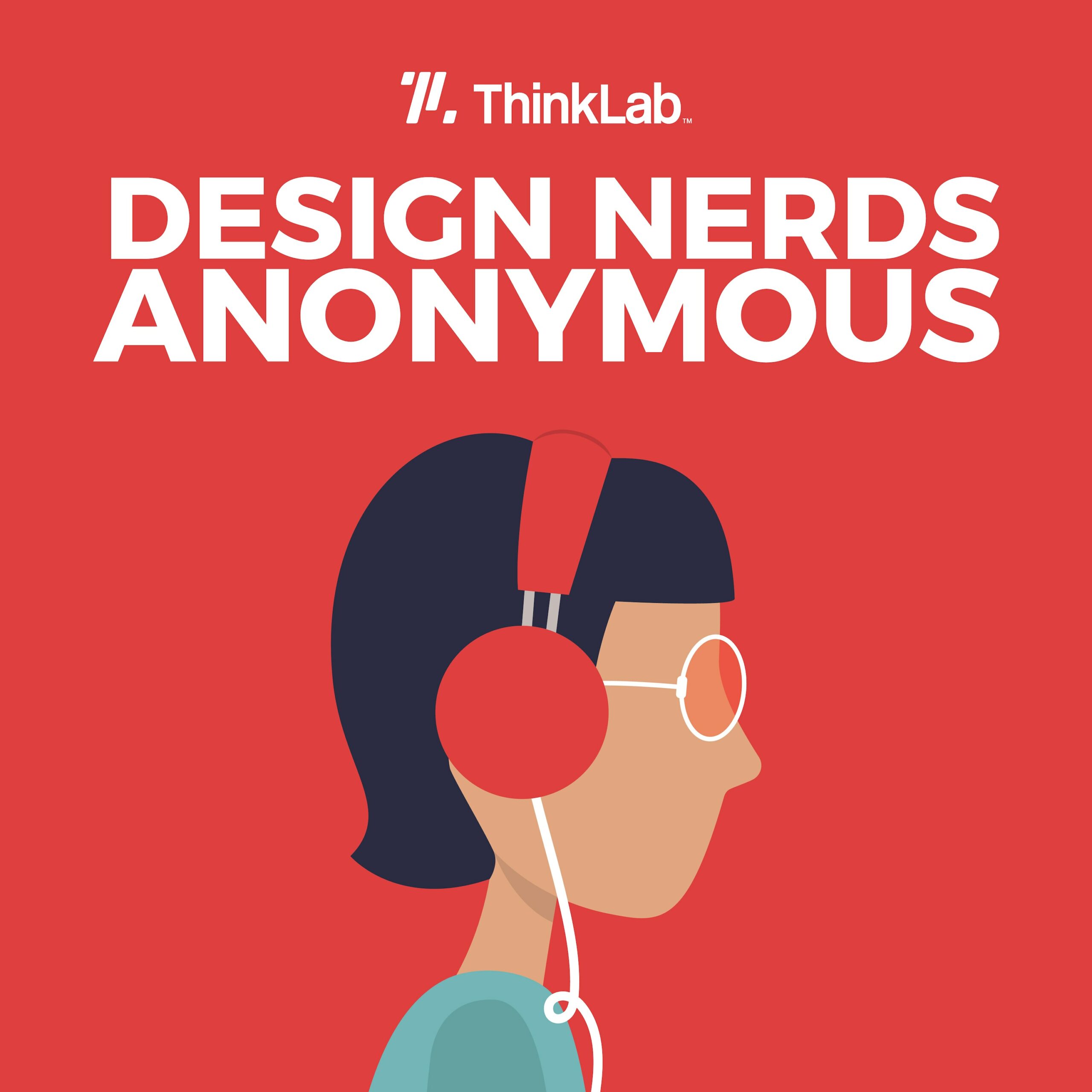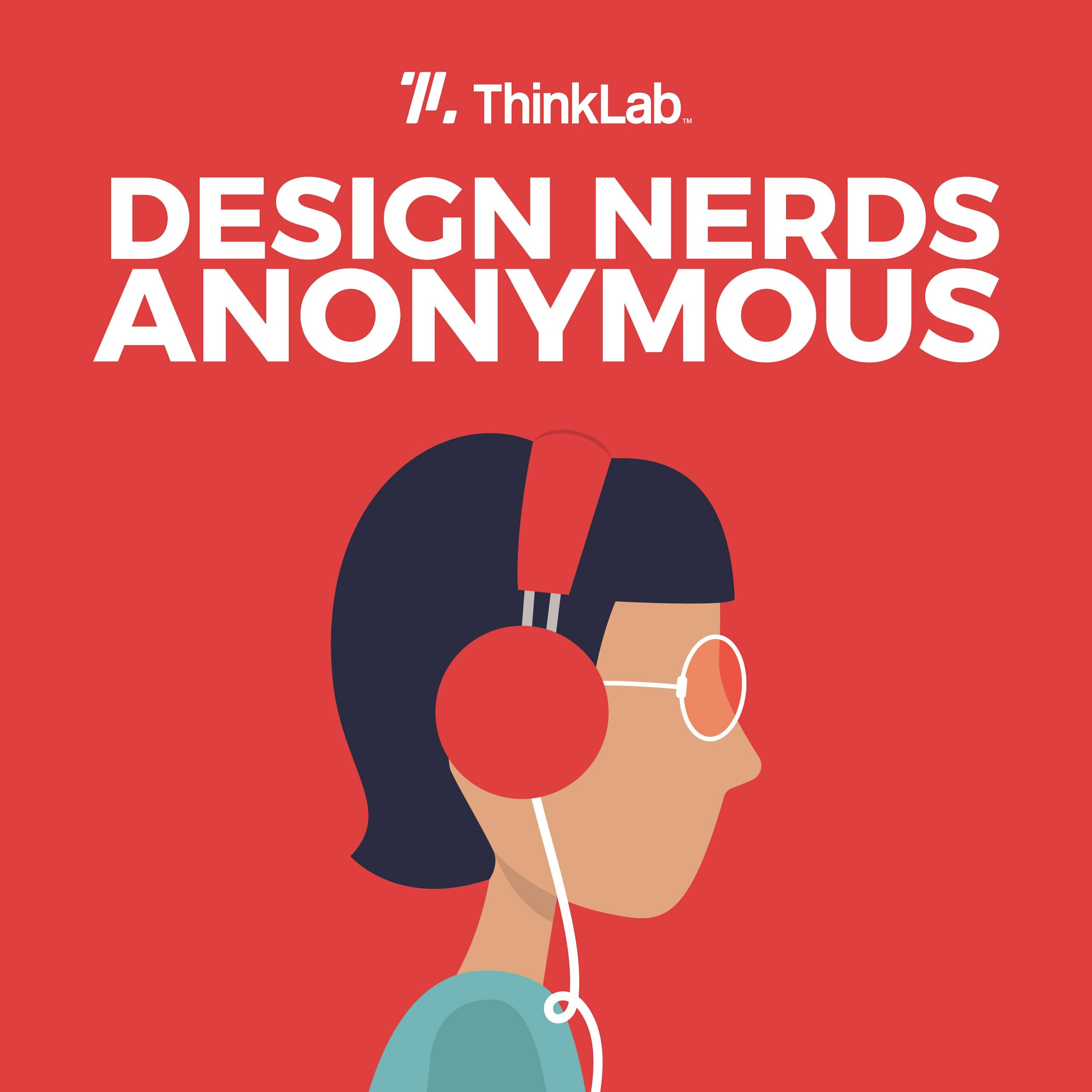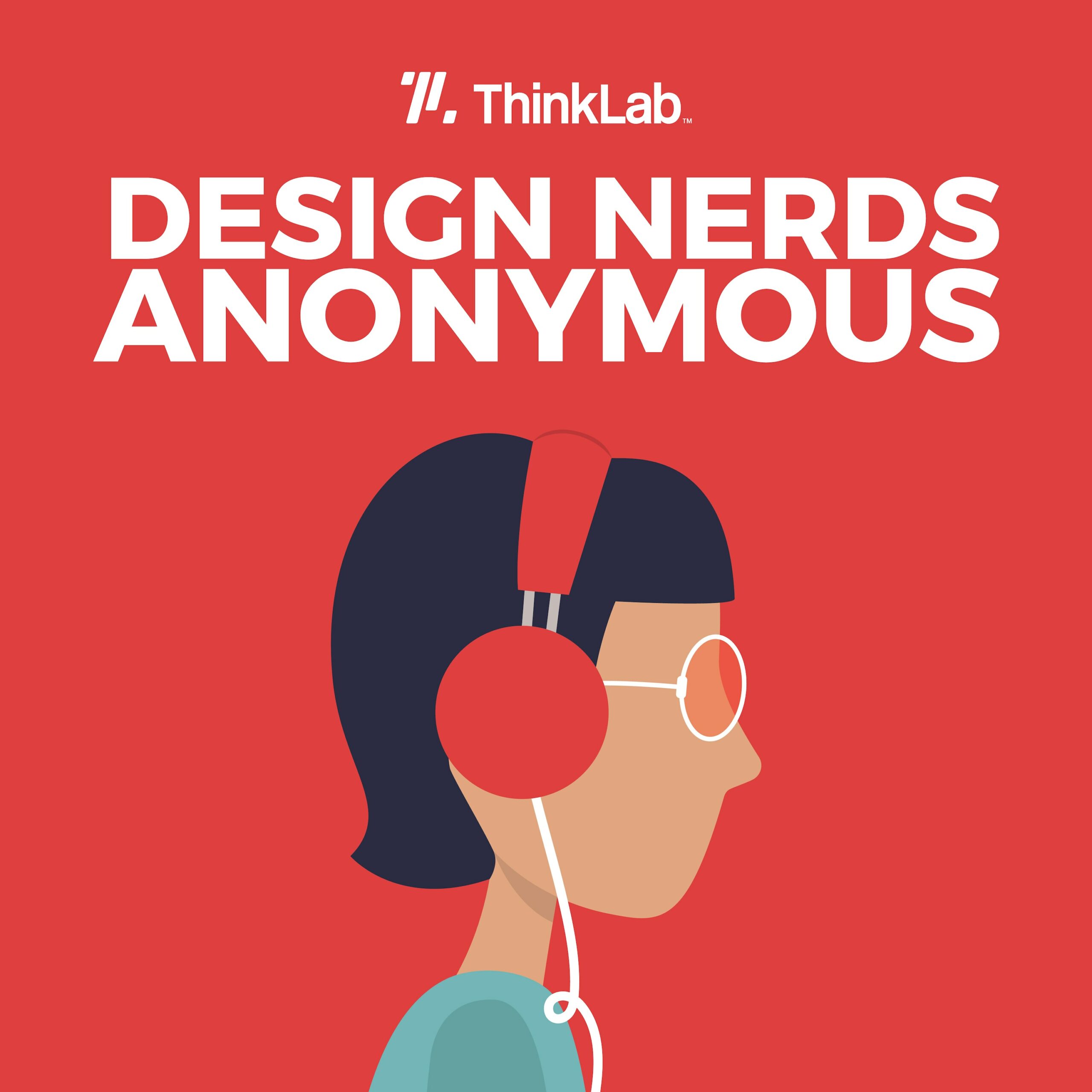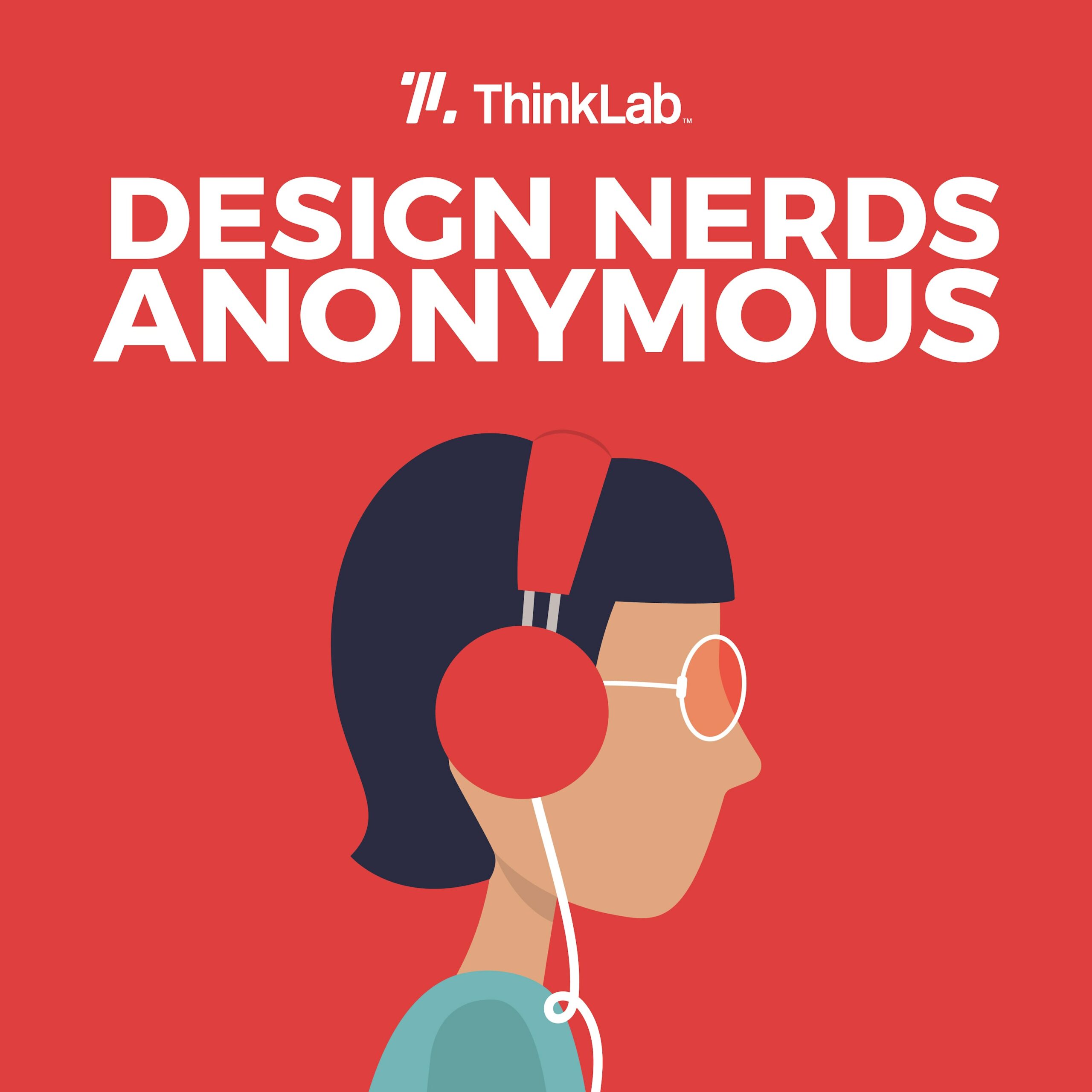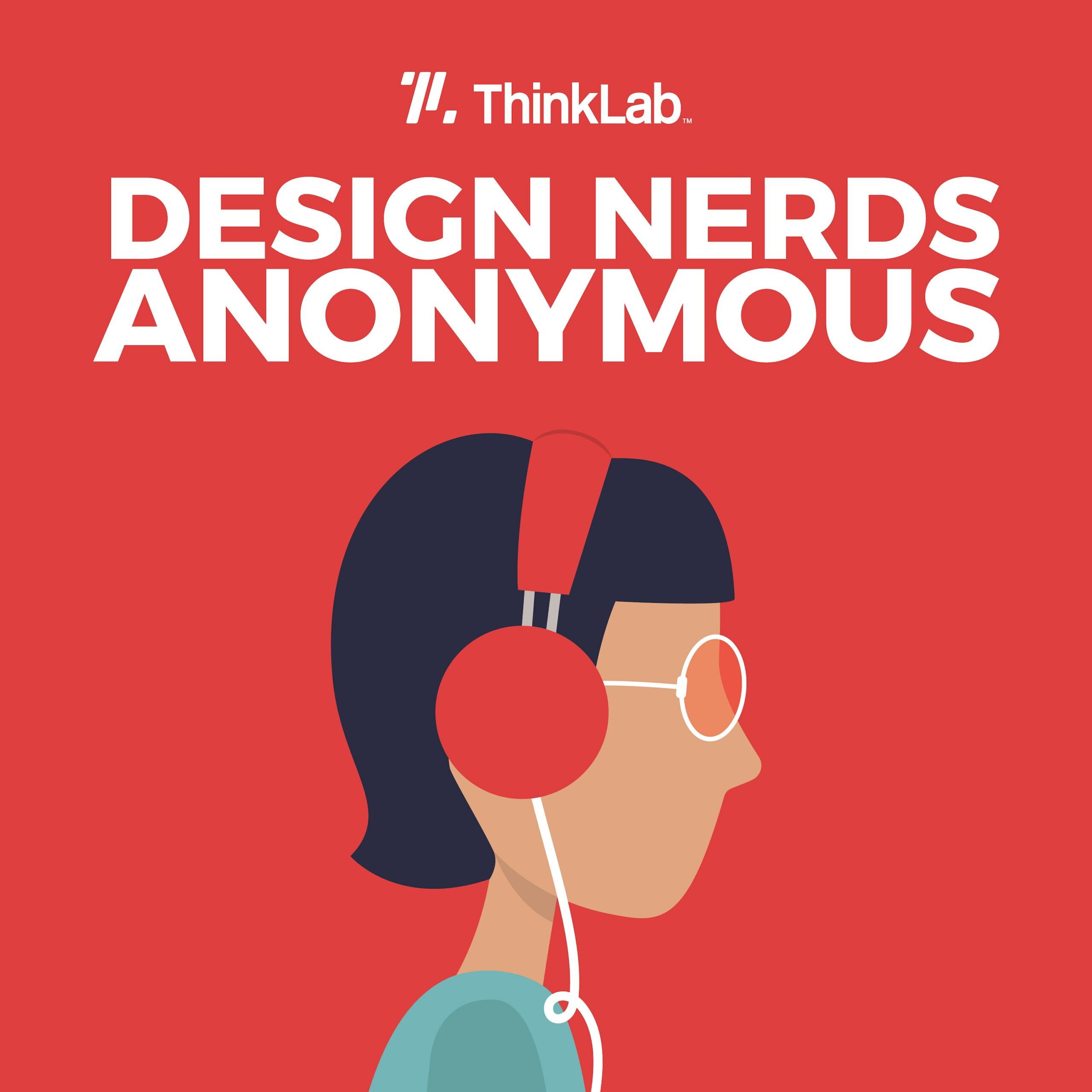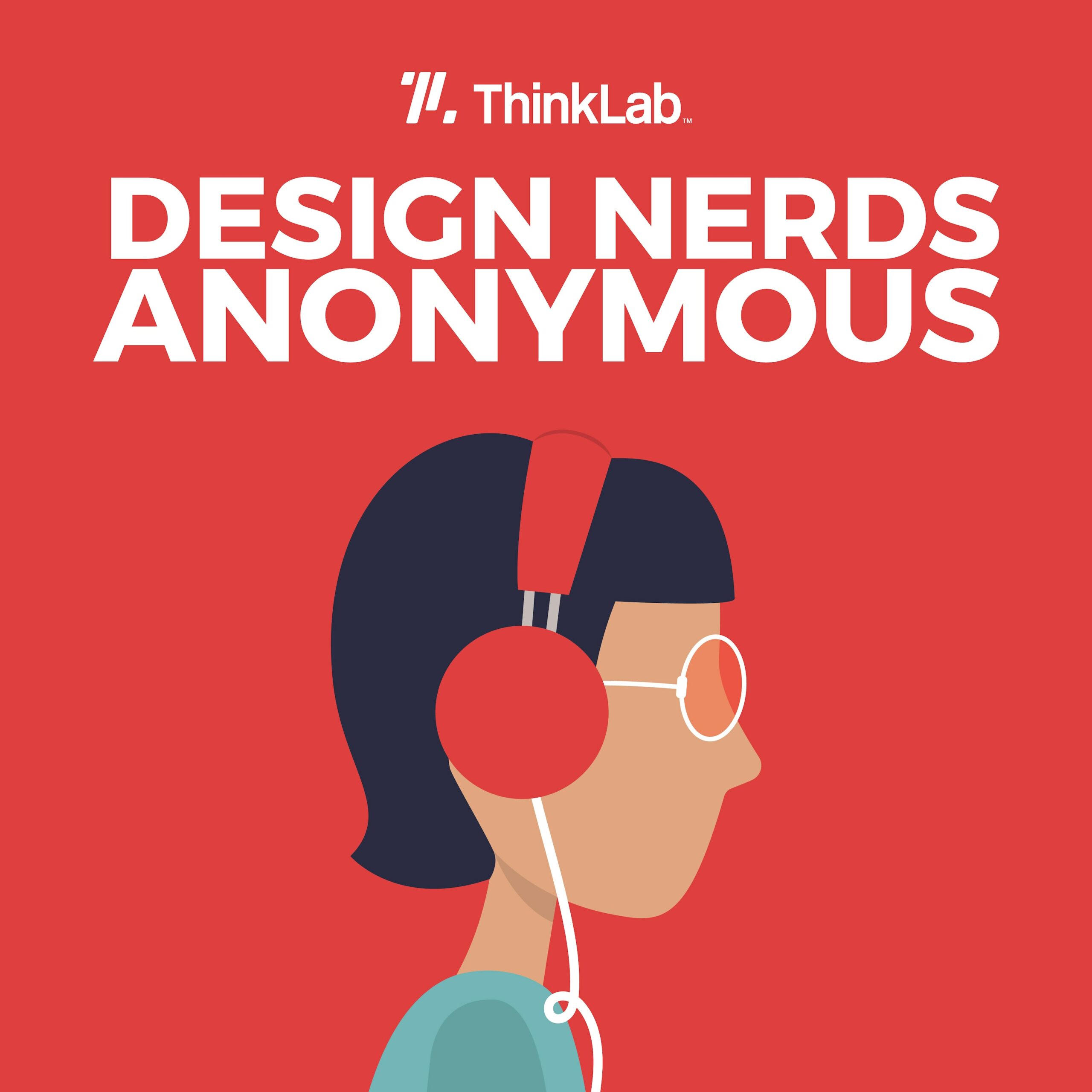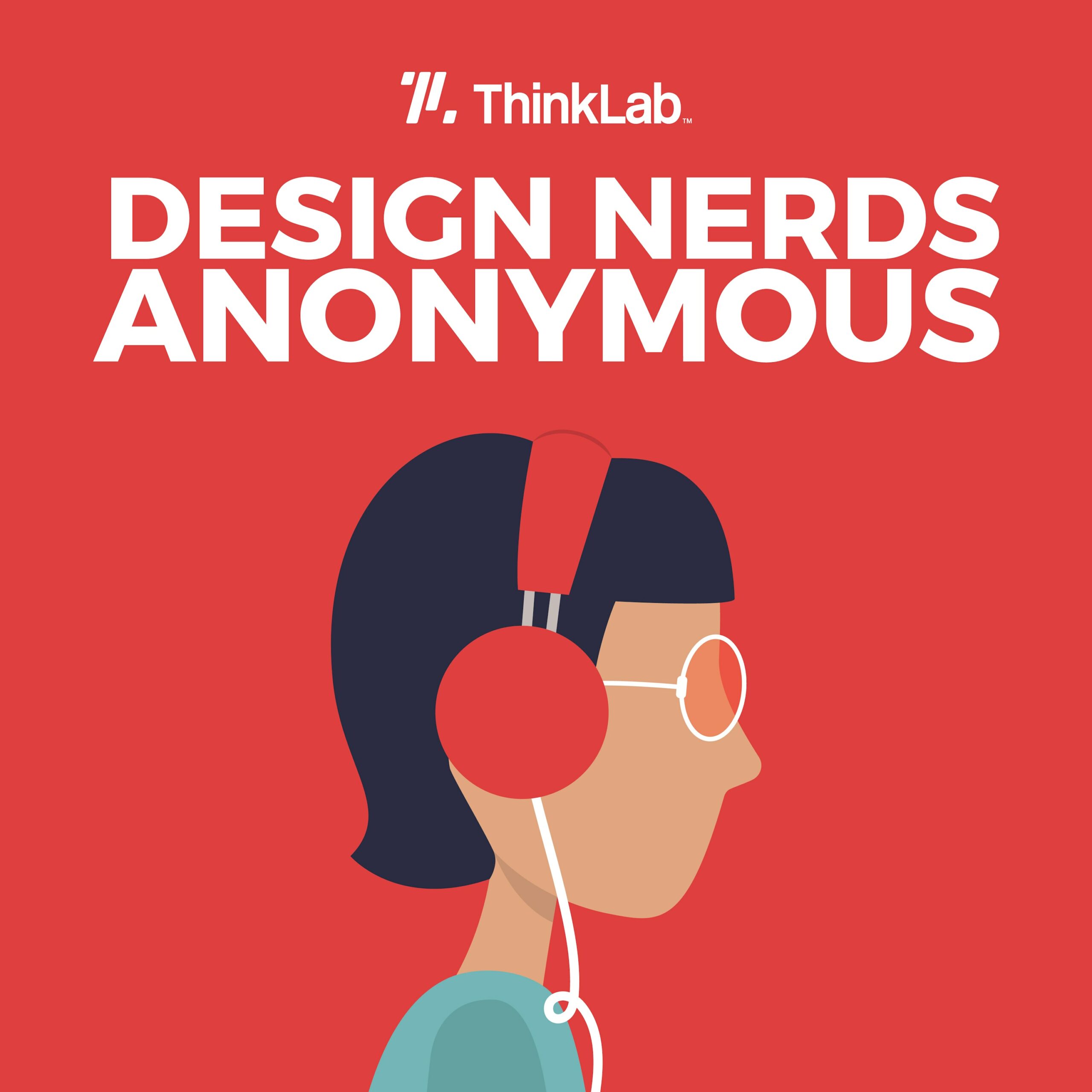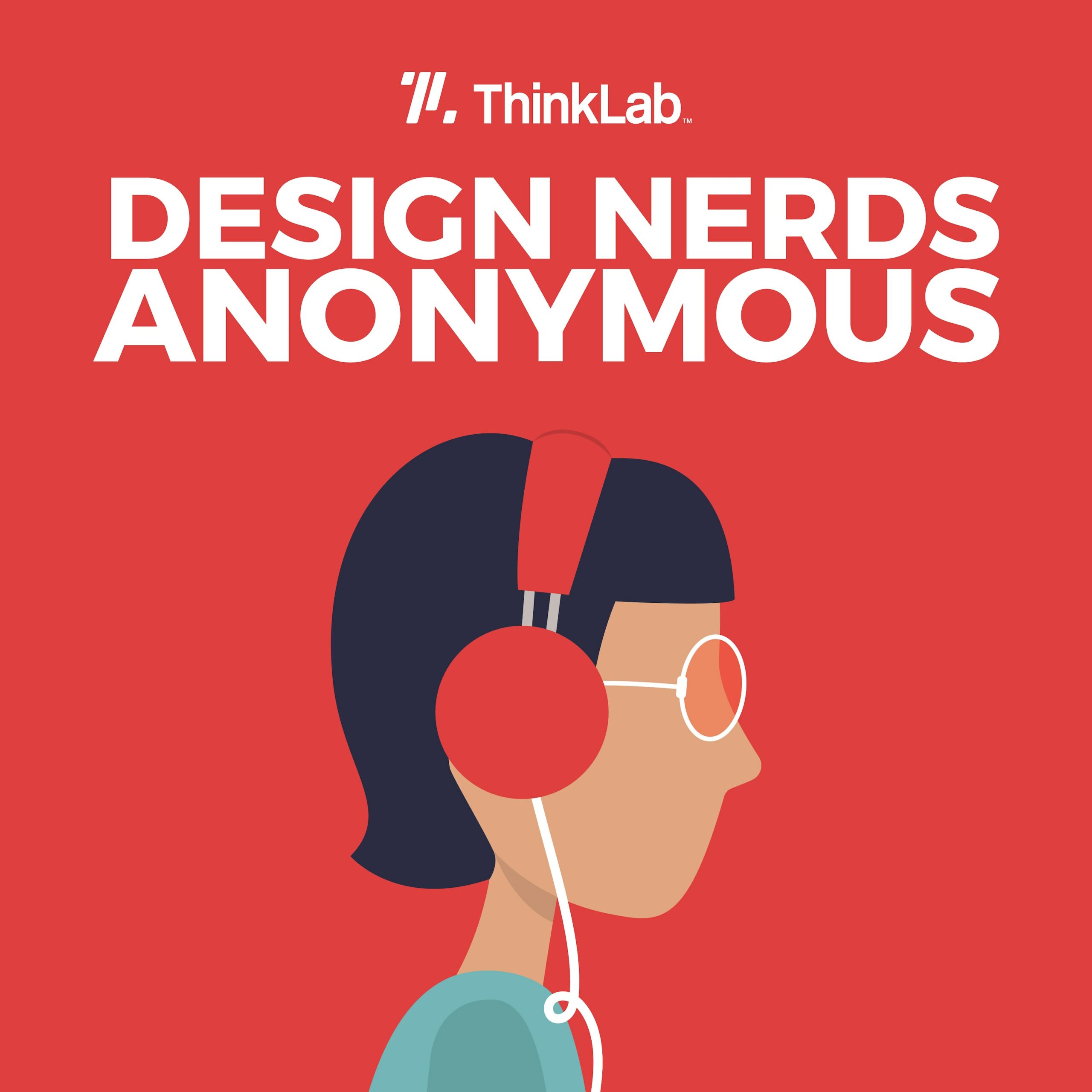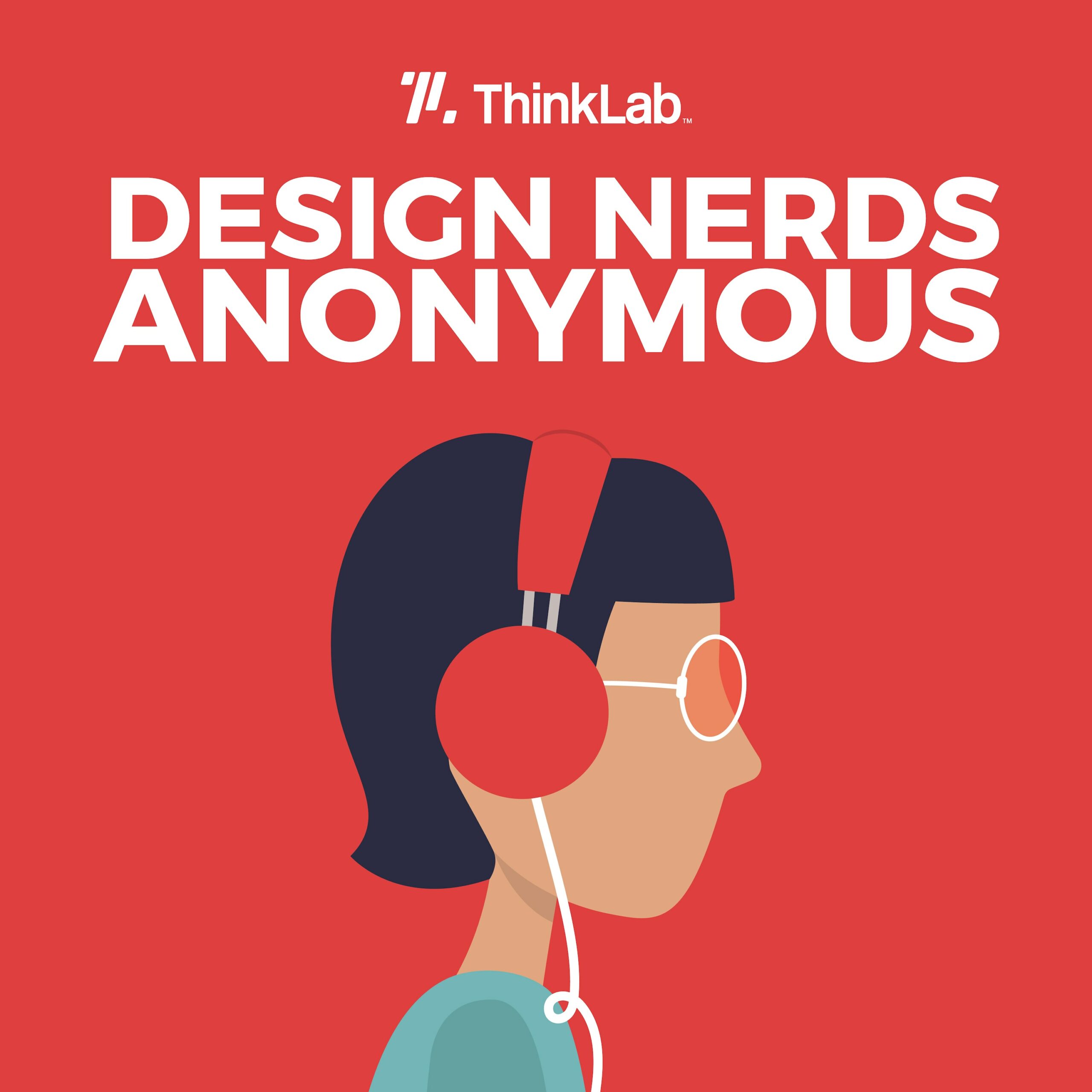In this episode, ThinkLab explores disruption in commercial real estate and the sector’s entrée into design services. We focus on JLL’s new solution to simplify the design process and accelerate the time from design to build.
First, we speak with Thales Teixeira, former Harvard professor and co-author of Unlocking the Customer Value Chain: How Decoupling Drives Customer Disruption. Drawing on his work in consulting and his book, Thales shares his advice on how to avoid disruption, including staying vigilant for trends outside your own industry.
Then, we discuss JLL’s latest product offering with its head, Lori Louis, and global product lead Christine Hong. They explain how coming up with the new service actually led them to reconsider the traditional design buying process. They realized that JLL serves two different user groups — economic buyers and end users — whose needs diverged during the pandemic, and described to us how they tailored the service accordingly.
In this episode:
[14:01] Thales explains how and why the buying habits of consumers and B2B customers are converging.
[23:54] Christine describes JLL’s human-centered approach to design, focused on the end user.
[24:40] “What people say and what people do are very, very different things. And we’re trying to design for what we think people will end up doing.”
[31:24] Lori discusses how the new offering helps companies test and pilot design solutions during this time of uncertainty.
Connect with our interviewees on LinkedIn:
This season of Design Nerds Anonymous is brought to you by Mannington Commercial, Keilhauer, theMART, and NeoCon, companies doing big things to move the design industry forward.
To take part in the conversation, we invite you to join us on Clubhouse in our club, Design + Data w/ThinkLab, on Fridays at 9 a.m.
Download our leading-edge playbook: 100 Ways to Create a Phygital Sales and Marketing Strategy.
Finally, thanks to Hannah Viti, our audio producer, and Blue Dot Sessions for providing the music for this episode.
How This Commercial Real Estate Firm is Redesigning Design
Amanda: [00:00:00] If you’ve followed ThinkLab over the past decade, you know we’reWHo fascinated by the topic of disruption. So to kick us off, I want to ask you some bold questions: Does the topic of disruption evoke emotions of threat or excitement of opportunity for you? Are changes in the design industry the death of creativity or the beginning of a new iterative design approach? Are these new digital tools depersonalizing or creating new types of intimate connections? We’ll let you decide as we progress through this episode.
Now, we’ve been focused this season greatly on product specification. In this episode, we’ll expand that to look at disruption in a broader sense for the design industry. We’ll specifically dive into commercial real estate and their entree into [00:01:00] design services.
Lori: Traditional design takes so long to get through the design process itself, and then it’s expensive. And what if you get it wrong? Not only do we have a lot of choice embedded in the design solutions themselves, but the process of getting that design to the point of being able to build is radically quicker.
Amanda: The voice you just heard is from Lori Louis, head of JLL’s new Experience Spaces team. In chapter two, we’ll hear more from Lori and her colleague, Christine, about their new service offering at JLL. In chapter one, we’ll take an academic look broadly across many industries at how disruption happens, with former Harvard professor Thales Teixeira, co-author of the book Unlocking the Customer Value Chain: How Decoupling Drives Customer Disruption. And we’ll leave you with tangible tools about how to drive your own disruptive thinking.[00:02:00]
Welcome to season three of Design Nerds Anonymous, the podcast that sparks curiosity at the intersection of business and design. I’m your host, Amanda Schneider, founder and president at ThinkLab, the research division of SANDOW Design Group and sister company to media brands you know and love, like Interior Design, Metropolis, Luxe, and more. At ThinkLab, our passion is sharing inspiration for your business, fuel for your design process, and connection with people and ideas for positive disruption. So, thanks for listening. We’re glad you’re here.
Now let’s dig into chapter one with our first interviewee and a bit of outside-the-industry inspiration.
Thales: My name is Thales Teixeira. I am the co-founder of the digital agency called Decoupling.co. The organization does consulting advisory work for companies [00:03:00] trying to essentially migrate to the digital economy, to the digital world, to transform their business models.
I was a professor at Harvard Business School in the marketing unit for 10 years. And there, I did a lot of research on the economics of attention, as well as on how startups are disrupting big, established companies. And that culminated in me launching a book called Unlocking the Customer Value Chain to really explain to executives and entrepreneurs — both from startups and small companies, as well as big companies — how this big change in the market is happening all across the world and in many different industries.
Amanda: And his challenge to us is to look up and look outside of our own echo chamber. When we’re only focused on one industry, and many of us have grown up in our unique little sector of this design universe, it may be easy to think that our industry’s challenges are unique. [00:04:00] But his advice is:
Thales: Don’t think that your problem is unique.
There’s recent research by IBM. They interviewed many executives in many different industries — I think 30 or 40 industries. And they had like 50 pages, and there was one statistic that just exploded in my face, that was so glaring, which is, you know, 95–96 percent of the time, people only read and only go to trade conferences in their own industry. And only like less than 4 percent of the time, our business folks, like your audience, are looking outside the industry. And I think that’s a very, very bad thing, because many trends, many behaviors are happening across industries. And if you’re focused on yours, you will not see a trend in business consumer until it hits smack into your business model. And by that time, it might be too late.
So the first gauntlet that I throw is: Spend time [00:05:00] outside your own industry. There’s a lot of transformation: from big to small startup disruption in healthcare, in education, in food, in transportation, you name it. You don’t need to go to all of them. Choose a few that you have most inclination with, and try to observe that. Why? Because you will see it more clearly, because there, it doesn’t impact your livelihood. So you’ll be more objective about it. Instead of this emotional baggage that we carry, like, “Oh, I’m a big company.” You know, “the startups are the worst” or “I’m a small company niche. The big companies are the worst.” That is not a healthy, you know, behavior to be in. And the way to abandon this is to look outside your industry.
Amanda: And that’s exactly what Thales did to create the insights for his book. In his role consulting for many different types of industries, and from his work as a Harvard professor, he noticed a simple pattern for how disruption happens. It involves something he calls “the customer [00:06:00] value chain.”
Thales: The key insight that I got, in part by teaching this concept to my students at Harvard, is that no matter what industry, no matter what product or service you’re selling, each activity can be classified into an activity that creates value for the customer.
Amanda: To make this visual, consider this like a little chain of individual steps that your customer takes to buy your product or service.
Thales: So if you’re buying beauty products today, the standard way that many people have been doing it for decades is essentially going to a store. And many times they go to Sephora, which is the biggest retailer of beauty products in the world.
And at Sephora, you can do many activities there. One, you can browse around to see all the new innovations in cosmetics. You can ask for one of their beauty consultants to give you advice and recommendations. You can actually test some of the beauty products. You can choose what product you like or you don’t like. [00:07:00] And you can go to the cash register. You can pay for it, buy it, take it home, use it. And when you need to replenish, you can say, “Well, I know I like that product. I know where it is. I’m going to go back to Sephora and buy it.”
These activities that I’m describing to you is what I call in the book the “customer value chain.” These are the activities that customers go through in order to acquire and use products and services. And so we have to go to a store, compare options, test, evaluate, choose, pay, get, take it home, use it, throw it away, dispose of it. If you look at any customer value chain — whether you’re buying books or cosmetics or education or healthcare or a car or services — you will see that there’s value-eroding, value-capturing, value-creating activities.
Amanda: Now some of those activities are value-adding or things your customer enjoys, like trying on makeup, while other things are value-eroding [00:08:00] or things your customer does not enjoy, like finding parking. And the pattern he noticed as he looked at disruption across many industries is essentially the intentional rearranging of those steps in the value chain.
And the pattern of rearranging the customer value chain tends to show up in two formats. The first is called coupling.
Thales: Now, what is coupling? Coupling is a strategy that companies in many different industries have realized. In order to help fulfill their customer’s needs, as well as to grow, they started doing more and more activities. These businesses grow by this process that I call coupling. It means essentially that they couple new activities in the customer value chain with the ultimate goal to be what we call, quote unquote, a “one-stop shop.”
Amanda: So if coupling is linking more little individual steps on your chain, think of the evolution of department stores and how they went from selling one thing to selling many, [00:09:00] or Amazon and its ever-expanding services, or commercial real estate. All of those are examples of coupling.
Thales’ second pattern is called decoupling. Decoupling is the opposite of a broad “one-stop shop.” Generally, it’s smaller, maybe startups, who look at the customer value chain and find ways to rearrange and specialize. In the Sephora example, think of Birchbox. They remove the customer-eroding step of going to the store and finding parking, but leave the joy of sampling, now in your own home.
Essentially, decoupling is taking those value-eroding activities, like finding parking, and creating ways to decouple the value-adding activities from those that erode value. And this creates a healthy, competitive struggle that is found in many industries today between large, or coupling, entities and smaller, typically decoupling entities.
Thales: What we’re seeing now is this tension between these two types of [00:10:00] companies. [First] the big ones, trying to get bigger by doing everything. You know, “Pay a big fee, and we’ll do all sorts of things for you. Don’t worry about it.” Why do they do that? What’s the benefit for the consumer, for the customer? It is convenience, right? So you have this convenience of dealing with one company with one agent. At the same time, the smaller companies are kind of playing another game. They’re saying, “If you really value this type of activity in your customer value chain, then you should probably do it with a specialized agent, a specialized company.” And that’s how they try to bring it in.
And so the tension that starts arriving is between companies that are mass producers or mass retailers or mass distributors of goods or services, and the more specialized ones [that] say, “We do something, and we do it a hundred percent of the time. So we do it better than the other guys.” And then the other guy is saying, “Yes, but we do many different things for your portfolio [00:11:00] of your needs.”
Amanda: But here’s the shocking piece. We often think of technology as the disruptor, but Thales says confidently that disruption doesn’t come from technology — it comes from the customer.
Thales: When I talk to my clients, they tend to think disruption happened because of technology, because a startup came in and started, you know, rocking the boat. And I tell them that’s not what’s going on. The root cause of disruption is that there’s innovation, and customers are adopting this new innovation. And when you aggregate that for millions and millions of people, customers disrupt markets — not startups, not technologies. The technology is used as a way to accelerate, and startups are the ones that are taking more advantage of this, because they can just observe the changing customer needs and wants and changing behavior.
Amanda: So if you’re trying to combat disruption in your own industry, Thales has this advice for us. [00:12:00] Number one: Consider the convenience and buying journey for all buyers across all channels.
Thales: The consumer doesn’t have multiple brains; the consumer has one brain. So they have one brain to buy shoes, to buy cosmetics, to buy furniture, to buy cars and this and that. And we make similar decisions across these categories. And so when I appreciate the convenience of ordering food from home or doing things from Amazon, I kind of require this from all of the other vendors for my needs. And so when I want to buy furniture or if I want to buy education, entertainment, healthcare — I don’t want to drive to a hospital. The doctors, all of these things, you know? So the adoption of telemedicine — telemedicine was around for like 10, 15 years, but the adoption just skyrocketed, because once consumers get a taste for convenience, they want it across the board. It’s not just restricted to a certain industry.
Amanda: Number two: [00:13:00] Consider pandemic shifts in value. Many people value time over money now, and that’s unlikely to change.
Thales: We started valuing our time much more. It turns out we used to value more money and less time. And now with the pandemic, we started really seeing other people in dire situations and really valuing our time. Not willing to stay in the car for half an hour, 40 minutes going for commutes. This has changed the way people work and live, and people are changing houses left and right, because we’re readapting to the new world in which our preferences for convenience, simplicity, has become more. And our preference for saving a few dollars here and there actually has become less.
Amanda: Number three: We tend to think of consumers and B2B buyers as very different, but they’re actually starting to converge. And B2B sellers of goods and services can find inspiration in an increasingly frictionless [00:14:00] consumerized experience.
Thales: We kind of make a huge distinction [between] business customers and individual consumers, and the way you would market to them was radically different, because you would think that the business customer is more rational. They buy based on specs. They have rational arguments, a very deliberate process. And consumers are more flimsy: They buy things. Sometimes they know why they buy it. They’re testing, trying it out. They buy based on the heart. They buy based on what others tell them.
Looking back, more and more what’s been happening is the confluence of those. The rational business customer used to buying on specs is becoming a little bit less rational and buying based on other attributes and trust and other things like that. And the consumer is also having more access to data and options and becoming more rational in many, many regards. And so I think there’s been more and more of a convergence. We’re, we’re helping move them into creating tools and [00:15:00] technologies for their customers who are business customers, but to interact with them in a more consumer-friendly environment.
So, let me give you an example. We as consumers, we use Amazon, we use Airbnb, we use Uber, we use Netflix. It’s so easy. You get an app, a new app, and it takes you maybe 10 seconds, if it’s a well-designed app, you start knowing how to use it, and you start searching and choosing what videos you want to watch, what house you want to stay in on your vacation.
It’s so easy and intuitive, but business applications have been so hard. You go to a desktop, it takes you hours to understand what’s going on. They’re awful looking. You have to plug in a bunch of numbers, and copy and paste, and all these things — it’s completely different. So it’s kind of like you have this easy, amazing life, very intuitive when you put your consumer hat on. And then you go to work and you take it [00:16:00] off, and you’re used to these clunky, awful designs of websites and systems and platforms. And we’re saying, “You know what? A consumer view to all of these applications would benefit all of the employees in the company.”
And so what we’re trying to do is, you know, Netflix-ify the business world with more intuitive applications. And so we’re seeing a convergence of these, and I think this is a, a very good thing.
Amanda: So as we dive into chapter two, let’s explore a bit more with JLL, arguably a large coupler, and how they’re expanding into the design space and really even taking into account some of Thales’ suggestions. Meet Lori.
Lori: My name is Lori Louis, and I work with JLL, and I am a part of our product development team and specifically a group called Experience Spaces. And we’re a new team that just came together, and we had a really unique [00:17:00] opportunity to come up with some new ideas and some innovative ideas around how we approach space design for our clients.
What brought me to that role and that opportunity to do that within JLL is a pretty broad 30-plus-year career and different experience levels around design and commercial real estate, corporate real estate. There are a total of five of us, so we’re a pretty lean and mean team.
Amanda: Now you may notice that their audio is a bit different than other episodes this season, but that’s because it was taken from a recent ThinkLab Clubhouse event. If you’re a fan of this podcast, Design Nerds Anonymous, you should definitely join us there. We’re on Clubhouse every Friday morning at 9:00 a.m., Eastern time, in our club Design + Data w/ThinkLab. We’ll put a link in the show notes.
Now, meet her colleague, Christine.
Christine: I’m Christine Hong. I am Lori’s global product lead on the Experience Spaces team. [00:18:00] I came to JLL about a year ago with about 18 years of hospitality and human experience expertise. So I worked for a very large global hospitality company and traveled the world, essentially operating, building, and branding hotels.
I had a very fortunate opportunity while with the previous company to pivot from building and branding to product development within that organization. And it got me really, really passionate and immersed in human-centered design and agile product development, which was one of the reasons why I was brought onto the team, because we are a product organization. We are structured in a way where everyone brings a different set of expertise to the group. And we work in a really flat org, where I bring the product development and that human design piece, and everyone else brings such a wealth of knowledge within wellness, within architecture, within workplace strategy design, etc.
Amanda: One of [00:19:00] my favorite quotes from the first time that I met your team, Lori, you mentioned something along the lines of “We set out to design a new product. And we ended up designing a new process.” So I wonder if you could walk us through that.
Lori: What we’ve ended up with is what we believe to be a new and innovative way to quickly and easily create high-quality yet lower-cost design solutions, so that companies can transform traditional office environments into sought-after work destinations. How we got there is really starting at the beginning with just a blank sheet of paper. We did want to look at some sort of a predesigned approach and bring Christine’s experience on how hotel design works, traditionally space types that, that lean a little bit more heavily into package design and see how that might fit in the office world.
Amanda: And one of the things that fascinates me about this team is that they’ve gone [00:20:00] beyond just looking at the end product. They’ve also deeply explored the process by which people buy. And while impossible to demonstrate that on a Clubhouse session or a podcast, rest assured this team at JLL will be simplifying the traditional buying process of design services.
Lori: We’ve also really looked at the influence of technology. As you look at the way that we, as a society, function and make decisions and do research, it’s really evolved over the last, you know, 20-ish years. And if you look at the history of design, how we design, how we present and share designs, that’s really evolved, too. We have a lot of tools now in technology that allow us to show things much more realistically, much more quickly. And that’s kind of in the design phase. And then once we build space, you know, we have a lot of smart technology and Internet of Things that help us to understand how we’re utilizing the space and how it’s functioning. [00:21:00] So when you look at the influence of technology on design, you know, that kind of adds an interesting layer as well.
We really looked at consumer buying habits and the move towards e-commerce in general. You look at the fact that online shopping only made up about 6 percent of sales in 2010, and then you jump ahead to 2020 — just 10 years later, it’s about 50 percent of sales. And then you layer that with the fact that we have a new generation that is kind of rising into managerial power: you know, we’re well into 40 percent of millennials who are making purchasing decisions and/or significantly influencing them (and quick to be probably more than 50 percent). And you look at their buying behaviors, and specifically in how they like to shop and how they like to make decisions. Their preference is to do things online. And they really like self-service models and would prefer not to interact with somebody if they don’t [00:22:00] have to.
Amanda: Another interesting area this team has researched is the effect of the pandemic, but not just on buyers. They actually divide their target constituents into two distinct groups, separated further in response to events over the past couple of years.
Lori: There was just a lot of work around just current research in how people are responding to the pandemic and what the needs are of human beings right now. I think we’ve all learned a lot about ourselves and each other over the past couple of years. And we’ve spent a tremendous amount of time talking to end users, gathering that voice-of-customer data, and really coming to the realization that as designers and real estate providers, we have two different user groups that we need to solve for, two different audiences.
Amanda: The first group are economic buyers who are looking for ROI on their investments.
Lori: We have the economic buyers who are making economic decisions, and they really need to have that business case and return on investment in line before they make decisions [00:23:00] and make recommendations to their leadership about investments in real estate, because it’s usually pretty expensive.
Amanda: The second group are the users who sit in this space.
Lori: But we also have a significant group, a significantly larger group, of the end users who are going to actually utilize the space and come sit in and use it every day. And that’s really where we have put the bulk of our focus, on the end users and what their needs are, and that’s really influenced the designs themselves.
And we really kind of buy into the concept that if you’re solving for the workforce and their needs, then you are by default solving for the needs of the company. As we, as we are really experiencing this true war on talent, it’s something we were talking about a lot and assisting our clients and solving pre-pandemic, but it has just really accelerated during this, this past year in particular.
Christine: I think maybe the one piece that I would stress a little bit is we’re very, very [00:24:00] interested in buyer behavior and user behavior. So, looking at this from a lens of human-centered design, it’s all about trying to solve the problem for the end user. And it’s about being people-centered and everything, trying to understand the activities, the decisions that people have to make in an everyday scenario to be able to accomplish any specific task or goal.
Because people are not back in the office, it’s hard for us to really understand how people actually end up using the space and how they’re interacting with the space. The one thing that’s been true from the beginning of pandemic to now — or even before the pandemic to now — is that what people say and what people do are very, very different things. And we’re trying to design for what we think people will end up doing. When you’re designing in all of this uncertainty, we just have to be so much more nimble, so much more flexible, and embrace that kind of [00:25:00] uncertainty and be able to just put something out there that people can respond to, just so that we know that we’re on the right track.
And I think what I’ve learned with more of a traditional design process — and not just design. I think process in general. Across all industries, people are very averse to putting a half-baked idea out there just to get feedback and to truly understand how the end user is going to respond to your design or to your product. And we spend a lot of time — and I almost could say that we waste a lot of time — trying to perfect a solution that we don’t know is going to work for our end user.
So with design in general, whether it’s architectural design or office design or building an actual physical product, it’s that idea of being able to be a little bit more incremental in our delivery and constantly [00:26:00] getting the feedback of end users along the way to make sure we’re on the right track. I think that that was really important for us in our process and probably a little bit different. We probably scared a couple people along the way when we put what seemed like half-baked ideas in front of them. But by doing that, we were able to collect the right insights and the right pieces of data to understand where we needed to take our product. Very impactful for us.
Amanda: Christine, I love what you bring from a human-centered experience. But whether you’re on the bespoke end of design or, you know, others trying to really create more of these systematized designs, I would say lots of people really approaching the design process would say that they do that. So I’m really curious about how your process is fundamentally different than what we might consider a traditional design.
Lori: Our product has been developed specifically for large corporate clients. That’s, that’s really the lens that we were working through. And most of our large corporate clients have, have made [00:27:00] the decisions and publicly announced that they are embracing a hybrid workforce strategy, which means they’re going to allow their employees the choice of how often and when they come to an office.
What we learned is most companies are all struggling with and trying to solve the same problem. And it’s: How do you bring people back, how do you draw them back into an office in a hybrid workforce setting when they’re only going to probably come in, on average, a couple of days a week? They are going to come into work differently, for different reasons, for different motivations. And it’s probably going to be their choice.
What we’ve learned from talking to literally hundreds, if not thousands, of people is that most people want to go into an office, and they want to engage and interact with their colleagues. But it’s gotta be a compelling reason and a different experience and a different way of working when they do go through that effort to get dressed and get ready and commute. And if they just go and have a frustrating experience getting connected to the technology, or they don’t get the opportunity to connect with people that they want to connect with, or [00:28:00] it’s a ghost town and they end up just sitting in a workstation by themselves, they’re probably not going to do that very many times before they say, “You know what? I’m just going to stay at home. That’s easier. And it’s more efficient.”
What we found is that the basic building blocks of what are needed to create an effective hybrid work environment are really the same. They don’t vary radically by industry, by region, by geography. It really is pretty much universally the same. And so when you sort of accept that, then you can just invest your time really designing those blocks super well.
I would say what’s different is that we have invested the time and the resources to do that very deeply, very well, and do it once. And then we’re using that to create solutions that really solve for 80 percent of the problem set and 80 percent of the needs, and then using [00:29:00] that as the jump-off point with our clients. So that really, we’re only investing time with them in the kind of final 20 percent that gives them the opportunity to tailor it to their needs and their branding and something that’s specific to them. And then once you get to that point where you’ve got to jump off of at 80 percent, then you can really accelerate the process of how quickly you can deliver those designs that meet the needs of a client’s individual requirements.
Christine: I think one of the other things that was a little bit different in my experience was that we very much focused on the end user feedback versus buyer feedback. Typically, we would show the designs through all the iterations to the decision makers, whether it’s corporate real estate or facilities, saying, “Hey, you know, do we like this color?” Or “Is a meeting room the right size? Does it hold the right amount of people, etc.?”
In our scenario, we were really, really interested in what [00:30:00] the workforce would think. And we went about it in a little bit of a different way, where we were able to partner with another research organization and build virtual environments and a virtual survey platform that took end users that we had specifically identified of those individuals that are working and using that space, and asked them specifically for what they liked, what they didn’t like, where they would work, why they would work there, why they wouldn’t work there — drilling down to the people that were actually using the space aside from the people that were actually paying for the space. And then by default, we are addressing the needs of the buyer.
But we went through a lot of different ways of securing that end user feedback that a lot of times is honestly ignored. What we were able to do is shift who is making the decisions and who gets the choice. We were basically allowing the end user to choose where they wanted to work, [00:31:00] how they wanted to work. Did they want to work at a desk? Did they want to slouch on a couch? Do they want to work in a very socially activated food and beverage environment? Our process fundamentally shifts who gets the choice, who gets to make those decisions to bring the designs to life.
Amanda: Why would they hire you over other options? How does this process really vary in terms of the solutions and the process?
Lori: Most of our clients need and want to do something, but honestly they are a little terrified about what to do because we have not had wholesale return to the office yet. And so we don’t really know how people are going to work, how they’re going to respond, how they’re going to behave. And so it’s a little daunting to tackle a space redesign, not understanding exactly what people are looking for and what they’re, what they’re gonna do and how they’re going to behave. And so we are trying to offer them a way of really just testing and piloting with their workforce [00:32:00] on what would work.
We are also providing a solution through a space design that allows them to be very collaborative with their workforce and say, “You know what? We’re not going to refresh or renovate our entire headquarters or our entire footprint of a building.” Let’s just take a floor, let’s take a wing, and let’s create this destination hybrid work environment that, again, provides all the things that we think are required for a successful day now. It’s a lot of formal meeting space, informal meeting space, collaboration space, socialization space, and opportunities for brief, individual, heads-down focus and breakout, where you can sort of, you know, have that focused opportunity and work alone but not necessarily be alone.
And so we’re really embracing the idea that people will do that heads-down focus work at home. We’ve gotten really efficient at that. And honestly, most people prefer that. So when you do come to the office, it’s for very different reasons. [00:33:00] And so this is an opportunity to test that sort of environment and those sort of working styles in a pilot scenario, maybe one floor at a time. That’s really what we’re designed to address, at least as a starting point.
Traditional design takes so long to get through the design process itself, and then it’s expensive. And what if you get it wrong? And so not only do we have a lot of choice embedded in the design solutions themselves, but the process of getting that design to the point of being able to build is radically quicker. So we’ve taken what we believe to be traditionally about a six-month process, on average, and we can deliver a set of CDs, stamped CDs, in six weeks. And that expedited time also results in lower cost. And so that becomes a really appealing proposition for companies to be able to get to the point of having that test space built out much quicker and at much lower cost and having the embedded flexibility within the design itself [00:34:00] and having the opportunity to test something sooner rather than later: to inform a broader strategy, year two, year three down the road, when hopefully the world has settled a bit, and we have a better sense of how people are really gonna work.
Christine: To Lori’s point, it’s very much derisking the process, because you’re not spending X hundred thousands of dollars for X number of months in order to get a design that may or may not work. You’re getting, you’re paying a lot less money for a lot less time to get a very, very robust and vetted solution. Every scenario is different and there’s so much unknown, but if you want to take this opportunity to try something, to learn, to iterate alongside your workforce, that’s an opportunity that is not available through a traditional process.
Lori: The only thing I would add to that is that we really tried to think [00:35:00] through that potential and that reality that we’re not going to nail it and get it right the first time, just because as designers and providers, we rarely do. And again, we’re at this very unique point in time where we really don’t know what people are looking for and what they need. What people tell you they want and what they’re going to do is often different than how they truly behave. So, you know, we recognize that, and we really tried to design each block and the spaces in ways that allow for easier reconfiguration down the road.
Amanda: But here, as we go back to chapter one, think about the idea of coupling as Christine shares the other part of JLL’s strategy.
Christine: Our product vision as a whole is more than just design. You know, we integrate the right technology in that space to make it come alive. We have solutioned all the FF&E so that we know exactly what chair and what lighting [00:36:00] fixture goes where, how long that the lead time is on those items, how much it’s going to actually cost you to build that thing out at very, very early stages. You’re not going into this blind. You’re going into this with so much more robust information than you would have.
And then on top of that, with JLL, there’s a capability of “It doesn’t have to stop there.” Right? Once you buy the design, JLL will help you build out that space. JLL will help you operate that space. JLL will help you continue to make that space successful into the future and help you iterate on that space if it isn’t. So, you know, just based on our reach, our capabilities, the product is taken far beyond just design. It’s into these actual, robust, and effective environments that continue to operate well, versus, you know, “Here’s my design, and we have no more responsibility for this space.”
Amanda: And so [00:37:00] if at this point you’re starting to wonder, “Yeah, but is this really good for our industry?” You’re not alone, not to worry. Bill Wittland of Vox Strategic, a consistent attender of ThinkLab’s Clubhouse sessions, posed this challenge live at the event, saying:
Bill: A designer from a large design firm said to me, “I see what the commercial real estate firms are doing relative to actual workplace design, and it looks to me a lot like Amazon.” Their thought was that Amazon started selling books and then decided to use the scale and speed they could offer to sell everything. And this designer thought that it was the objective of commercial real estate to simply use their ability to establish scale and speed, and then displace actual design with their ability to deliver [00:38:00] it faster, cheaper.
And so this person saw that as competitive, even though largely their process, because they were at a pretty leading-edge firm, was pretty much the same as the process that you two have described. How do you react to that and does that resonate, or is that a kind of unfair critique?
Lori: I think that’s an interesting perspective, and no, I don’t think it’s unfair. I think we believe that there’s, there’s room for all of these different approaches. This is not to replace the traditional bespoke design process. It’s just meant to be another option.
Christine: But I feel like we’ve heard that question/challenge over and over again, even internally from our firm. What we’re doing, we believe, is innovation, and we believe it’s a lot of disruption on how traditionally things have operated. And a lot of people are a little skeptical, a little scared about that. But I think the stance that we’ve kind of [00:39:00] taken all along is that innovation and disruption — it’s a norm, it’s a constant. It’s like change. It’s going to happen. So why not be the ones to do the innovating and disrupting, rather than following somebody else? Rather than waiting for our competitors to find a better, faster way to scale, like, let’s be the first to do it.
Amanda: One of our favorite things this season has been hearing from you, our listeners! We appreciate every single review you leave! As we start to gear up for Season 4 of Design Nerds Anonymous, we’d love for you to take just a second to leave us a rating or review — and let us know what you’d like to hear about next [00:40:00] season!

